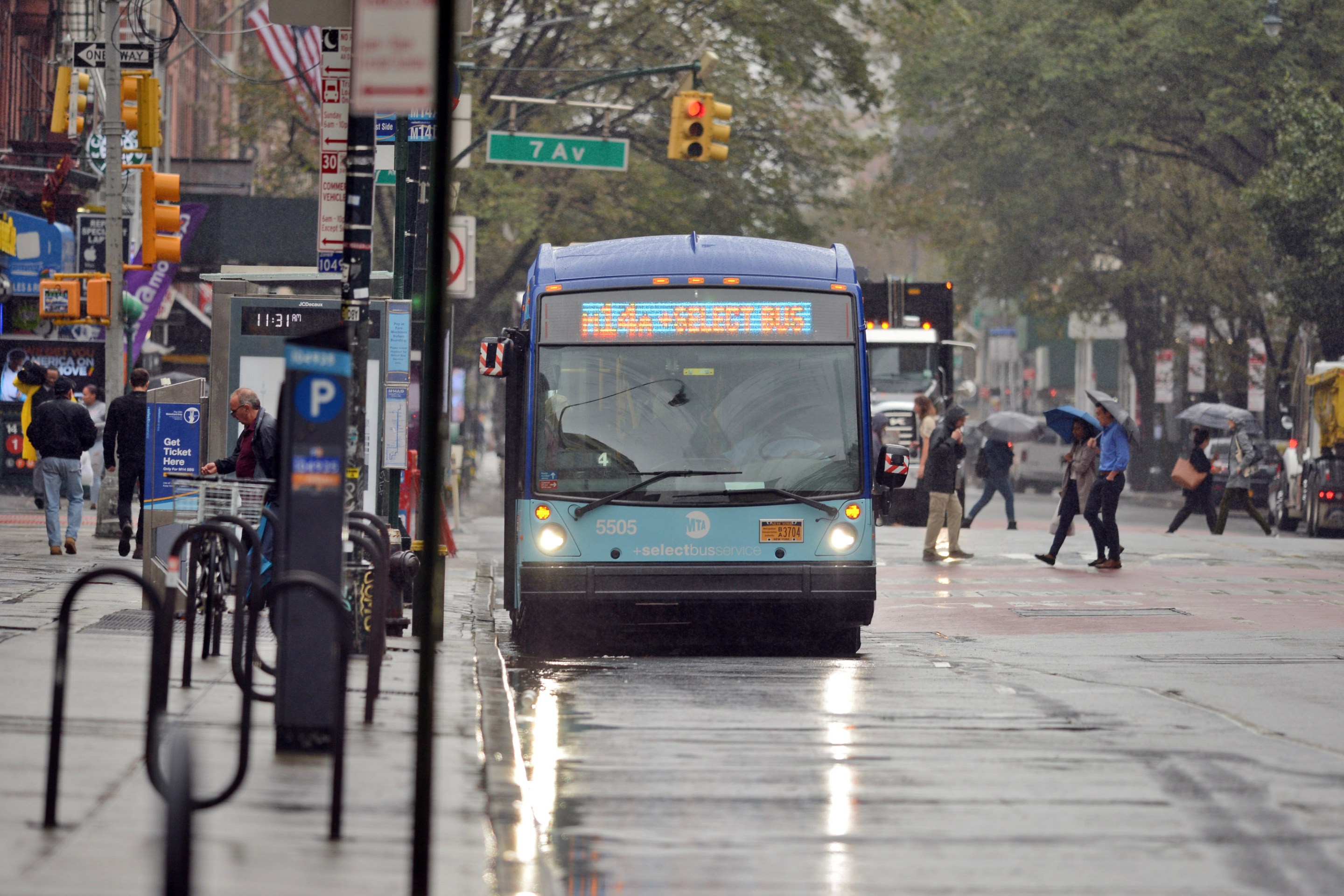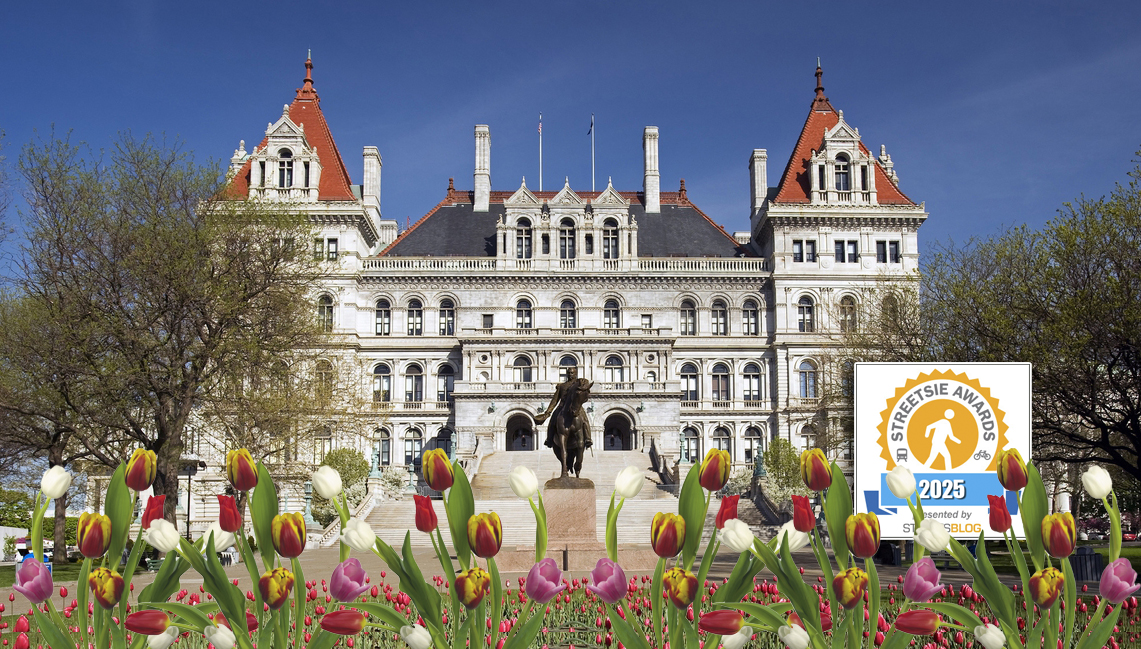
New York City drivers often fail to yield to pedestrians in the crosswalk. More LPIs would help reinforce the rule.
When DOT installed a leading pedestrian interval, or LPI, by a Lincoln Tunnel exit on 34th Street last month, nearby residents were thrilled. Cars turning onto 34th from Dyer Avenue -- a tunnel off-ramp -- had long posed a hazard to people in the crosswalk, leading Community Board 4 to request signal timing exclusively for pedestrians. At first DOT declined to take action, but after 300 people signed a petition in favor of the LPI, it was installed in a matter of days. Now pedestrians crossing 34th enjoy a luxurious 17 seconds during which they have the all-clear.
LPIs make pedestrians safer. The most widely cited study [PDF], released in 1999 by Michael King, former director of traffic calming at DOT and currently a principal at planning firm NelsonNygaard, found that LPIs reduce collisions between turning vehicles and pedestrians by 28 percent. Implemented throughout the city, LPIs could cut the number of pedestrians hit by cars by more than 500 each year, the report noted.
The new LPI at 34th and Dyer was a welcome improvement, but why the initial hesitation? After all, installing an LPI amounts to little more than flipping a switch, and costs next to nothing. Current DOT practice, however, requires time-consuming studies of individual intersections to determine whether an LPI is warranted. A different option, which Transportation Alternatives is now pushing, would make LPIs the default condition at the intersections where pedestrians face the greatest threat.
DOT's new strategic plan, Sustainable Streets, recognizes the effectiveness of LPIs and aims to double the
number in the city to 360 by 2010. That target could be
expanded and accelerated if the agency were to adopt the method
suggested by T.A. "LPIs should be as de rigueur as crosswalks," says T.A.'s Paul Steely White. "DOT should install LPIs at the 1,200 most hazardous
signalized intersections based on historic pedestrian injury and
fatality data." That would cover 10 percent of the city's signalized intersections.
The traffic engineers have yet to embrace the idea. DOT responded to T.A.'s suggestion in writing:
LPIs are installed after a study (that includes peak hour observations and an analysis of turning movement/pedestrian volumes and available accident data) determines their appropriateness. Your suggestion to implement LPIs at 10 percent of all signalized intersections (more than 1200 locations) is beyond the scope of existing operations.
One way to work around these limitations would be to install the LPIs first and study them later. "Then," says White, "traffic operations could identify
those locations where they may deem it appropriate to remove the LPIs to prioritize
motorized traffic."
With news surfacing that DOT is overhauling its design guidelines, now is an opportune time to standardize ped-friendly traffic signals, says T.A. Planning Director Shin-pei Tsay. "LPIs are a tool to complete a street."
Making LPIs standard operating procedure would also establish a precedent benefiting pedestrians beyond New York. "In switching the burden of proof to favor safety over traffic flow," adds White, "the
DOT could set an example for all urban areas and establish itself as a
leader in pedestrian safety."
Even drivers don't stand to lose much from this shift, as King's report makes clear:
Repeatedly,though, the question arises of how to justify the adjacent loss ofgreen time for vehicles. Yet all the LPI really does is electronicallyenforce the legal responsibility of drivers, especially turningdrivers, to yield to pedestrians in crosswalks. At corners with highpedestrian volumes, the drivers are already suffering a loss of greentime as they wait for pedestrians to cross. Furthermore, if an LPI issaving xx amount of pedestrians from being hit by cars, then it isfundamentally appropriate that the car should wait.
Photo: Clarence Eckerson





